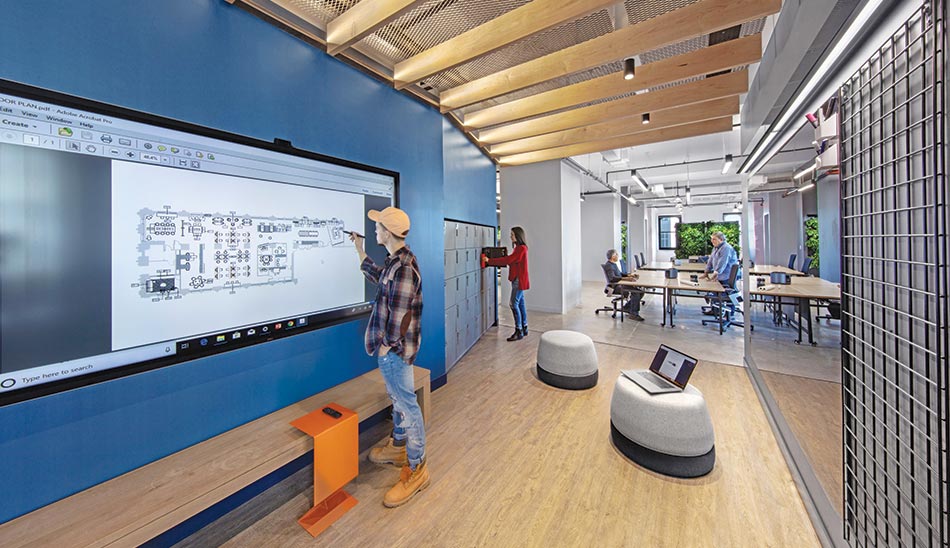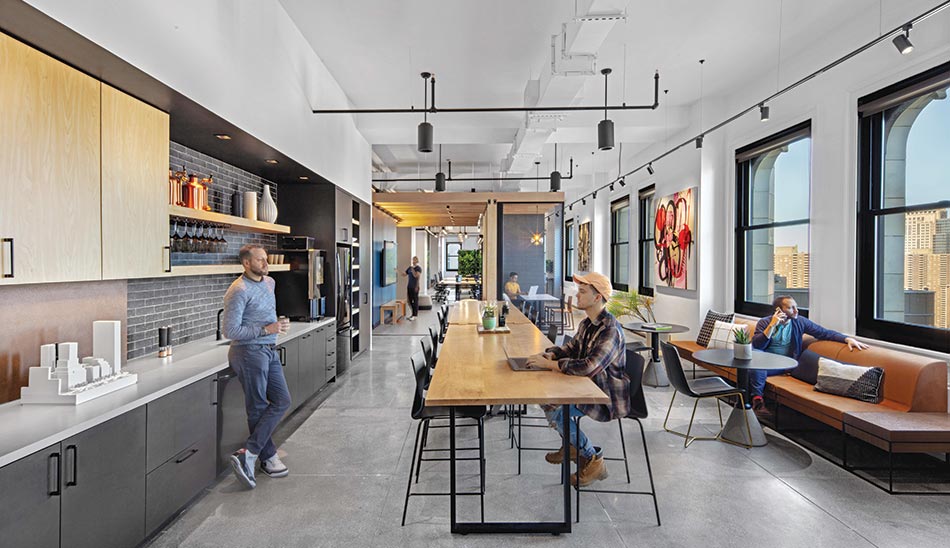
By putting people and the environment at the heart of the design, a truly futuristic workplace must achieve the equilibrium that embraces all of these objectives. This conviction is what also fuels M Moser's unique perspective on 'offices of the future' that go far beyond great design.
In addition to sustainability and wellness, modern office interiors tend to zero in on the concepts of workplace modality, collaboration, activity-based working, co-working and unassigned flexible seating. These have continued to be significant contributing factors to the constantly changing face of commercial workspaces.
In India, workplaces have been evolving at a much faster pace in the past five years than ever before, reflective of flourishing technology firms and the burgeoning millennial workforce, both of which are setting the agenda for change and paving the way for human-centric design
But how does design enable people to feel and perform their best at work, while accommodating future business growth? A modern work environment ideally focuses on addressing employees' individual needs, cultural experiences and business objectives; ultimately translating this methodology into new digital strategies, space planning, flexible furniture, and technology to realise a high-performing workplace. This subsequently gives rise to an empowered workforce, endowed with the spirit of freedom and experimentation, which in turn leads to transformative ways of working.
 M Moser's New-York Office
M Moser's New-York OfficePhoto credits: Eric Laignel
In the corporate office of the future, the standard approach to a "different way of working" will include mobility-inducing changes such as switching desk phones for mobile devices and swapping desktop computers for laptops for the entire team. This will enable people and teams to work in whatever way suits them best, allowing enhanced accessibility, collaboration and cultural identity.
Furthermore, flexible desk furniture and incorporated additional moveable furniture facilitates space adaption to various needs and events, from a small informal breakout to a town-hall. Users are thereby encouraged to adapt areas based on their unique requirements, without restrictions.
A futuristic workplace would embrace a wireless approach including access to rechargeable battery packs, high-speed Wi-Fi, a fully cloud-based network and a biometric fingerprint reader to eliminate the use of key cards at the entrance. Together, these utilities create a smart space where teams can strategize internally and with clients alike, with a future-focused approach to creativity and innovation.
 M Moser's New-York Office
M Moser's New-York OfficePhoto credits: Eric Laignel
As a benchmark for 'workplaces of the future', we need not look for inspiration beyond our own offices here, at M Moser. The recently completed New York office is an agile, future-proofed "living lab" for on-going adaption and change. A perfect example of a work environment that embraces organizational change and growth, this new space reimagines ways of working that encourage movement and flexibility to meet the needs of each person, team or task. Dubbed a "living lab", it serves as a co-working space and enables M Moser to test and develop a broad range of workplace strategies to ensure the best results for clients.
The very essence of design is transformational; therefore, the workplace is always evolving. There is never a single approach to an ideal 'office of the future'. A design approach could consist of all the concepts mentioned in this article or a combination of select methodologies tailor-made for a specific business. It ultimately boils down to the 'human-centric' aspect of design; it's about finding what works for the client and helping build the ideal habitat to cultivate growth and success.















